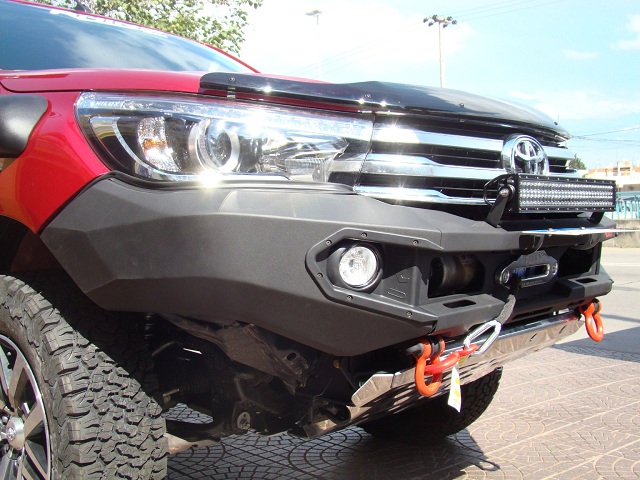As off-road and overland enthusiasts look to conquer more trails and reach remote places to discover, winches have become an integral part of the essential 4×4 equipment list. Winches were mainly designed for pickups and 4×4, but nowadays there are many different types that can accommodate everyone’s needs, as there are models with a wide range of capacity – from a few hundred kilograms to a few tons. With that said, if you’re new to winches, you should probably do some research and consider all the facts before you make the investment, as it can be a pretty hefty one.

The main thing to factor in is that the winch that might be right for your buddy Dave, who has a similar truck to your HiLux, might not be the right one for you. Even though the perfect HiLux winch should be durable, inexpensive, lightweight and always ready to pull you out of a sticky situation, you have to be practical and understand that most new HiLux winch models are usually a compromise between reality and the ideal.
Many overland and off-road enthusiasts opt to carry a winch as a form of safety feature in case they get stuck in snow or mud in a remote location. That being said, the winch should be reliable, and it should be able to get you unstuck in a safe and timely manner. There are a few pulling techniques that you can use, like the double line pull technique, which slows your recovery process down but doubles the winch’s pulling power.
Moreover, in order to find the best winch for your vehicle, you’ll have to determine your vehicle’s gross weight, which can be typically found on the riveted metal tag of your door. However, you should also take into account the extra load you typically carry with you and add it to your gross vehicle weight. Typically, the winch should be capable of pulling at least 30% more weight than your vehicle’s gross weight.
Additionally, you want to consider the weight of your vehicle’s front end. Don’t get a winch that weights a lot if you don’t have the proper suspension to support it. If the winch has a synthetic rope, you’ll increase your vehicle’s front end weight by a few dozen kilograms. If you use a steel cable instead, add another 10 to 15 kilograms. While these numbers may not seem significant, they can definitely impact your front suspension and compromise your rig’s handling.















